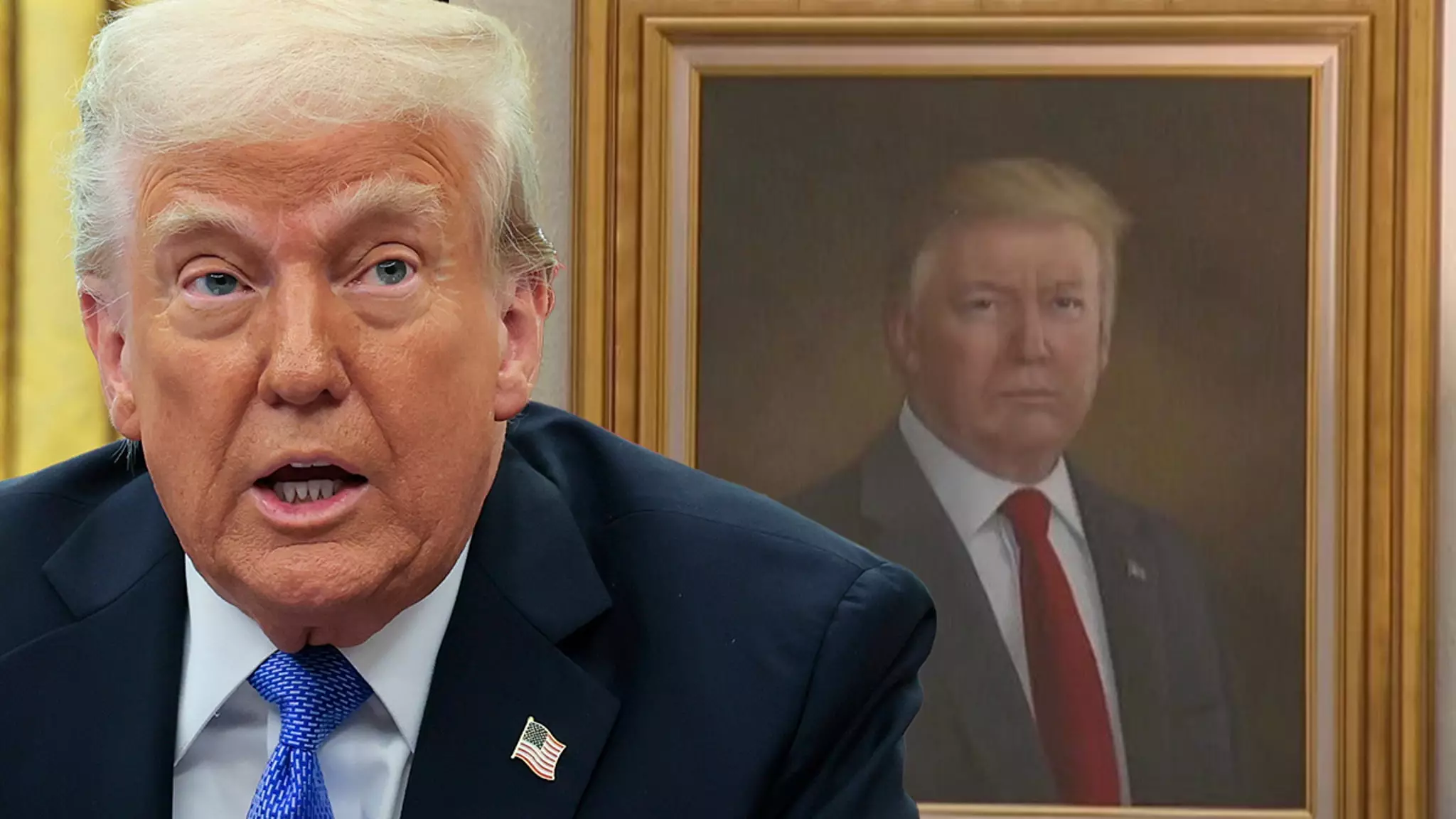In an unexpected turn of events, what should be a simple appreciation of art has spiraled into a heated demand for removal. Former President Donald Trump has publicly lambasted a portrait of himself showcased in the Colorado State Capitol, branding it as a “purposefully distorted” depiction that he believes diminishes his likeness. This incident reveals more than just a disagreement over artistic interpretation; it captures the essence of how personal ego often intertwines with public perception, particularly for a figure as polarizing as Trump.
The Role of State Artwork in Political Imagery
Art in state buildings often serves as a historical record, documenting the legacies of those who have shaped the nation. The Colorado State Capitol, constructed in 1901, stands as a monument to such histories, elegantly adorned with portraits of previous presidents and state governors—each representing a fragment of America’s complex tapestry. The addition of Trump’s portrait should ideally signify an acknowledgment of his role, but his vehement rejection raises concerns about the subjective nature of legacy and representation. It forces us to question: how much influence should a public figure wield over their own artistic depiction?
Public Rebuke or Artist’s Integrity?
In his tirade on Truth Social, Trump criticized not just the artwork but also its creator, implying that the artist’s talent had waned with age. Such remarks strike a dissonant chord between the realm of artistry and the volatile world of politics. Are we merely witnessing an instance where personal feelings overshadow the artistic narrative? The integrity of an artist is invaluable, and each brushstroke conveys a sentiment that may not align with the subjects’ self-image. This raises a fundamental ethical dilemma: Should artists be beholden to the whims of their subjects, or is their freedom to interpret their subjects paramount?
The Colorado Governor’s Dilemma
Reacting to the furor, Governor Jared Polis’s spokesperson conveyed surprise at Trump’s reaction, indicating that the state is committed to enhancing visitor experiences. However, the question remains if such a statement indicates a dismissal of Trump’s critique or a readiness to engage in dialogue about artistic representation within state property. Will the governor stand firm against a former president’s demands, or will pressure mount to appease a constituency that perhaps does share Trump’s outrage?
Art as a Mirror of Society
Ultimately, this situation transcends the confines of a single painting. It embodies the swirling issues of identity, propaganda, and public representation. Artwork becomes the lens through which society examines itself, but when a singular voice—especially one as loud as Trump’s—screams distortion from the canvases of heritage, it can skew perceptions and ignite passionate debates. As the discussion unfolds, it concurrently reveals the unyielding relationship between the individual and collective narrative in America, stirring both anger and admiration from audiences across the spectrum.

Leave a Reply